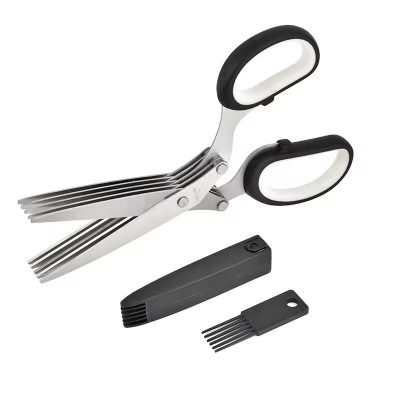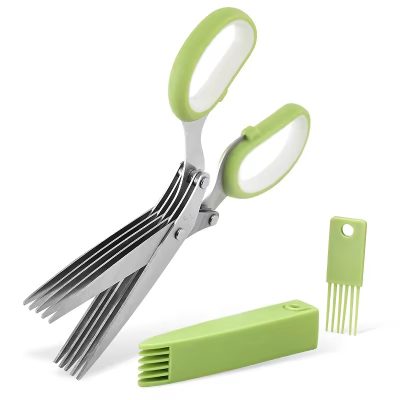Introduction
Kitchen scissors have evolved significantly over the years, transforming from a basic cutting tool into a multi-functional marvel. This evolution has enhanced their utility, making them an indispensable tool in modern kitchens. In this blog post, we’ll explore the history and evolution of kitchen scissors and how they have become an essential kitchen gadget.
Early Beginnings
The origins of scissors date back to ancient times, with early versions appearing in Mesopotamia around 3,000 to 4,000 years ago. These early scissors were made from bronze and featured a spring mechanism to open and close the blades. Over time, scissors evolved in design and materials, eventually becoming a common household tool.
Introduction of Kitchen Scissors
The specific adaptation of scissors for kitchen use began in the 19th century. These early kitchen scissors were primarily used for basic cutting tasks, such as trimming meat and vegetables. They featured simple designs and were made from durable metals like steel.
Advancements in Materials
As technology advanced, so did the materials used to make kitchen scissors. Stainless steel became the preferred material due to its resistance to rust and corrosion, durability, and ease of cleaning. Modern kitchen scissors often feature high-quality stainless steel blades that retain sharpness and withstand the rigors of daily use.
Ergonomic Design
The design of kitchen scissors has also evolved to enhance comfort and usability. Ergonomic handles made from soft, non-slip materials like silicone or rubber provide a secure and comfortable grip, reducing hand fatigue during extended use. Ambidextrous designs cater to both left- and right-handed users, ensuring versatility and ease of use.
Multi-Functional Features
Today’s kitchen scissors are equipped with a variety of multi-functional features that enhance their utility:
- Bottle Opener: Built-in bottle openers allow for easy opening of bottles and jars, adding convenience to food preparation tasks.
- Nutcracker: Integrated nutcrackers provide a simple solution for cracking nuts and crushing garlic, eliminating the need for additional tools.
- Herb Stripper: Some kitchen scissors feature herb strippers that make it easy to remove leaves from herb stems, streamlining the process of adding fresh herbs to dishes.
Separability for Cleaning
One of the most significant advancements in kitchen scissors is the introduction of separable blades. This feature allows the blades to be taken apart for thorough cleaning, ensuring that no food particles or bacteria remain trapped in the pivot area. Separable blades also enable the scissors to be used as individual knives, adding to their versatility.
Sustainability and Eco-Friendly Designs
Modern kitchen scissors often incorporate eco-friendly materials and sustainable manufacturing practices. Brands that prioritize sustainability use recycled materials for handles and packaging, reducing their environmental impact. This shift towards sustainability reflects a growing awareness of the importance of environmentally conscious practices.
Conclusion
The evolution of kitchen scissors from a basic cutting tool to a multi-functional marvel has greatly enhanced their utility and convenience in modern kitchens. Advancements in materials, ergonomic design, multi-functional features, and sustainability have transformed kitchen scissors into an essential kitchen gadget.








